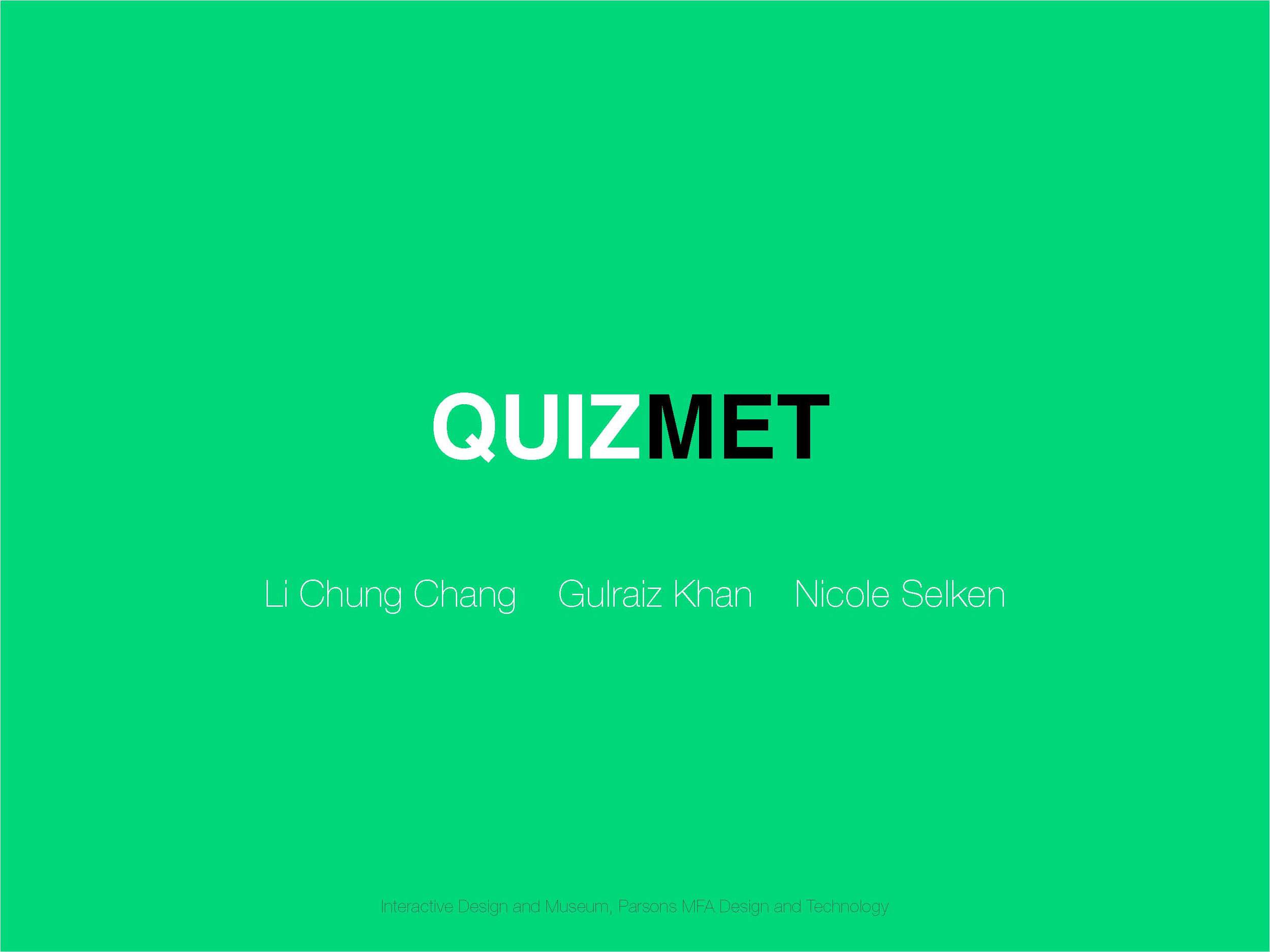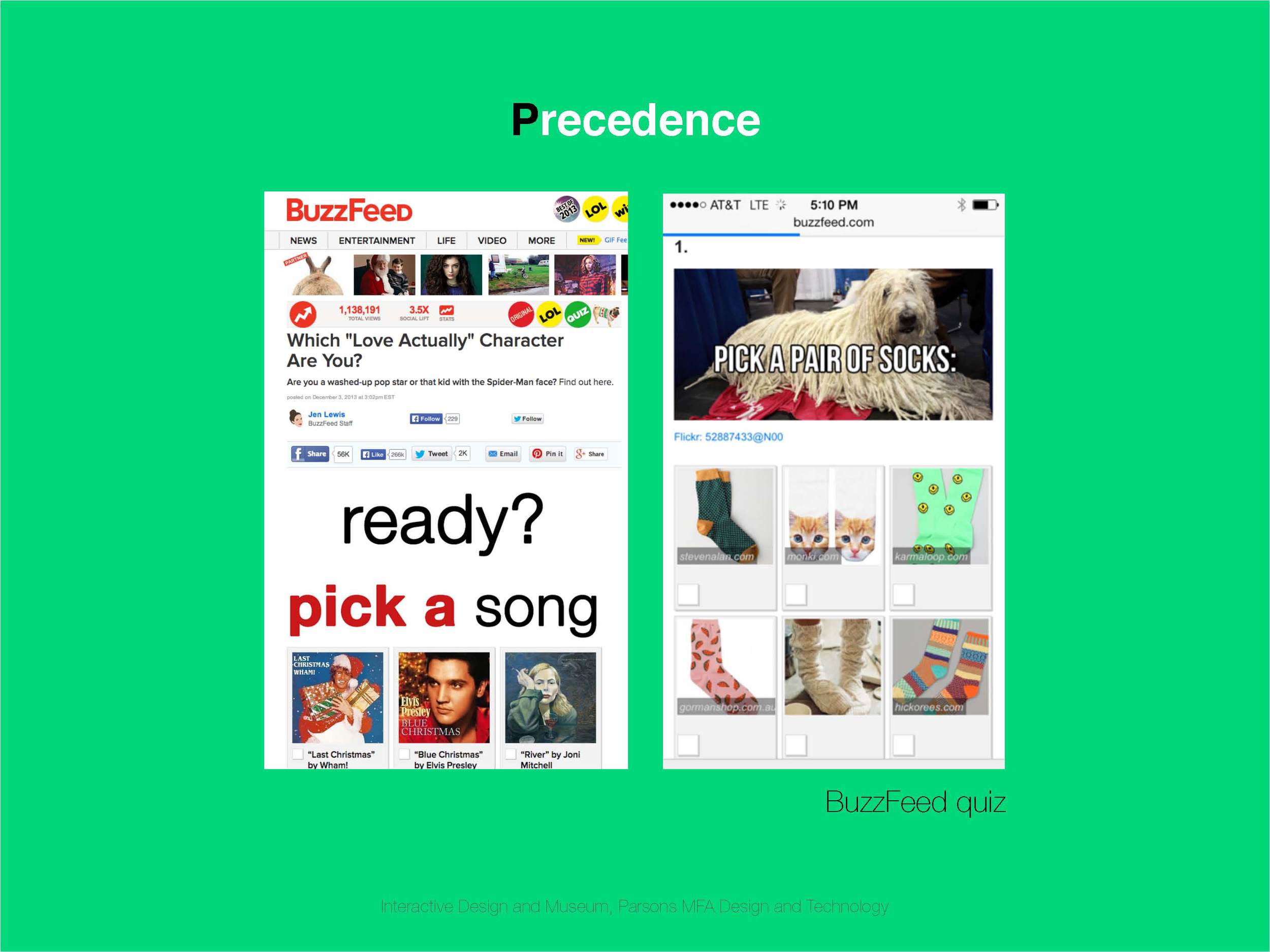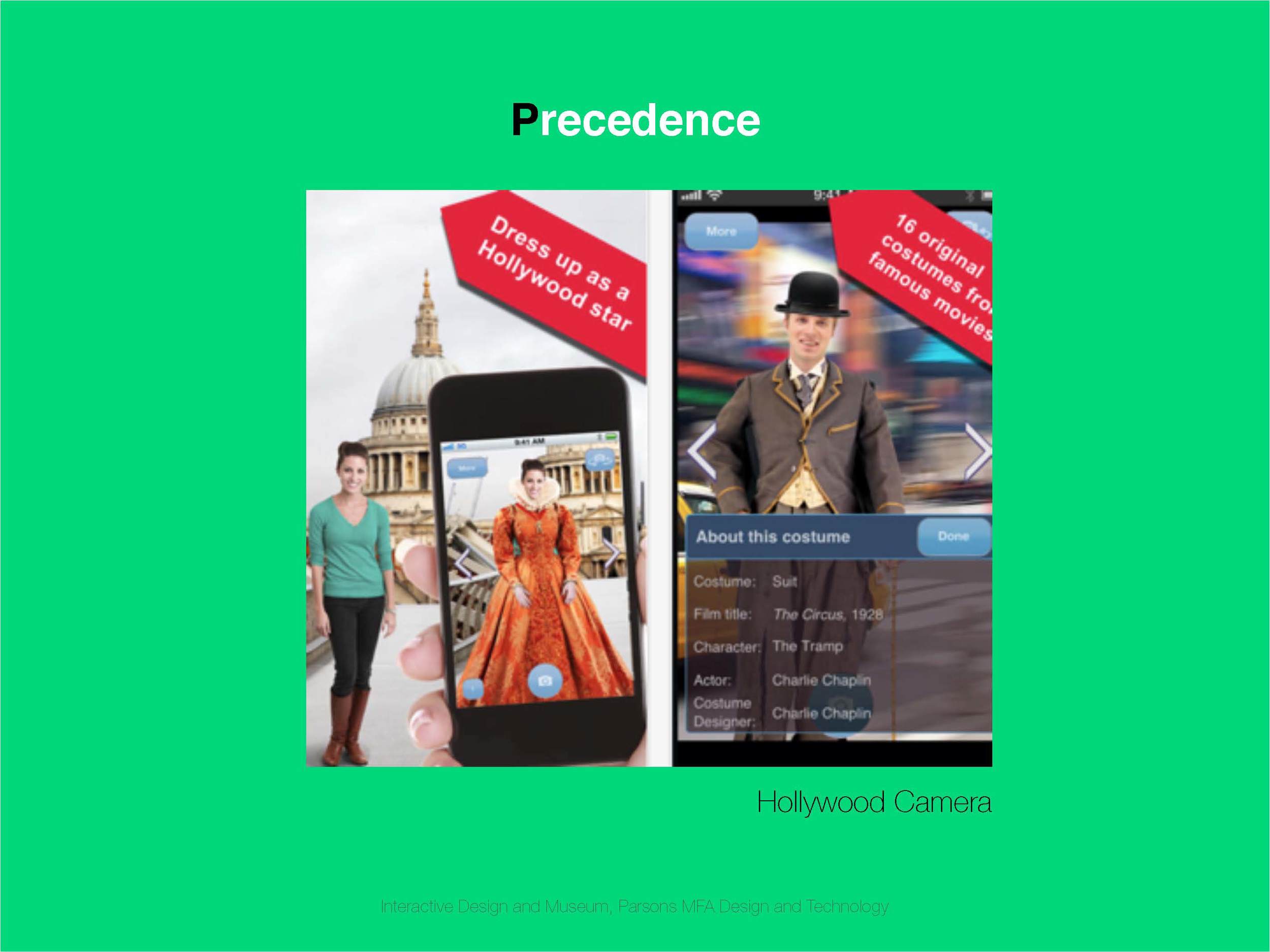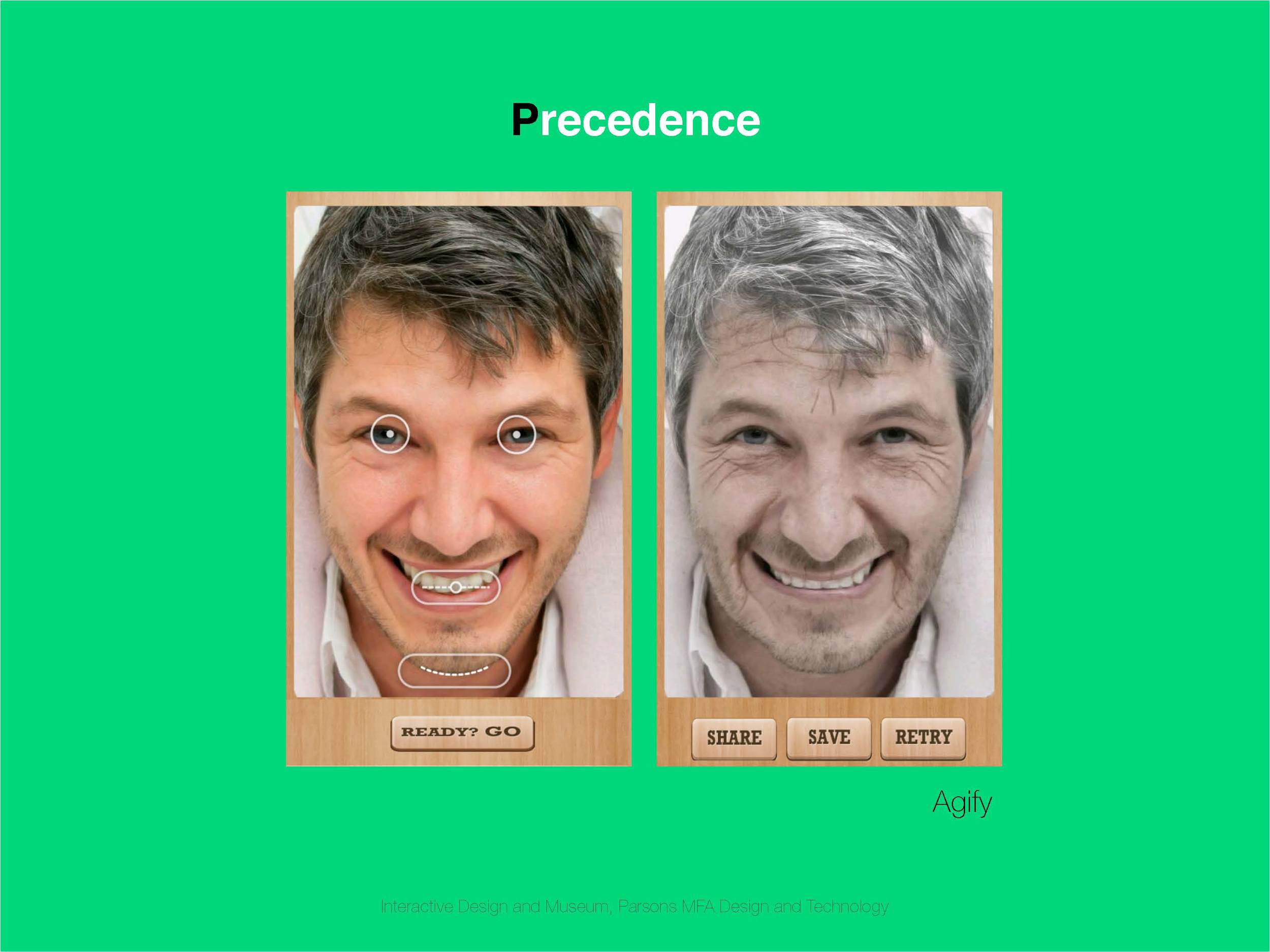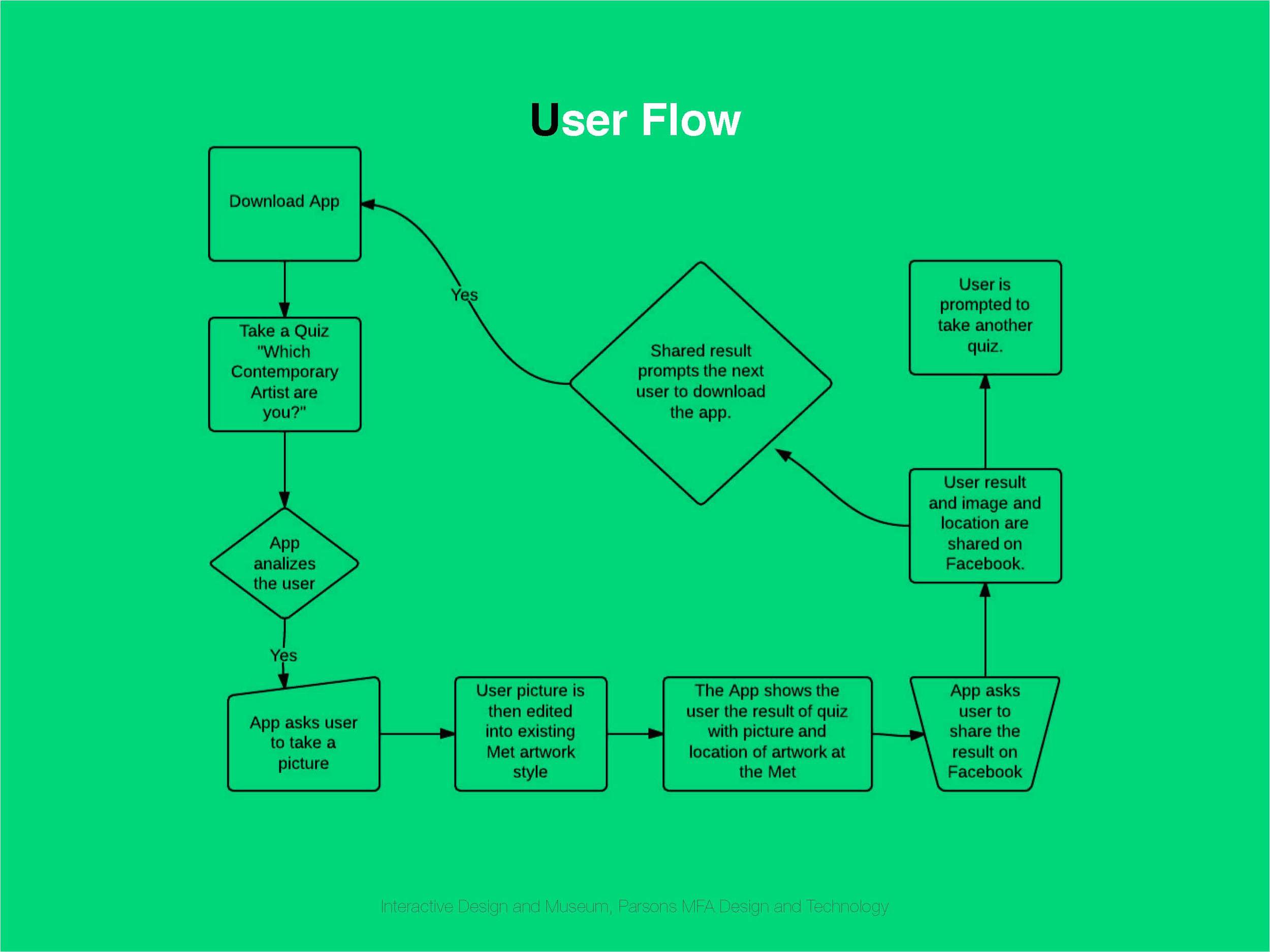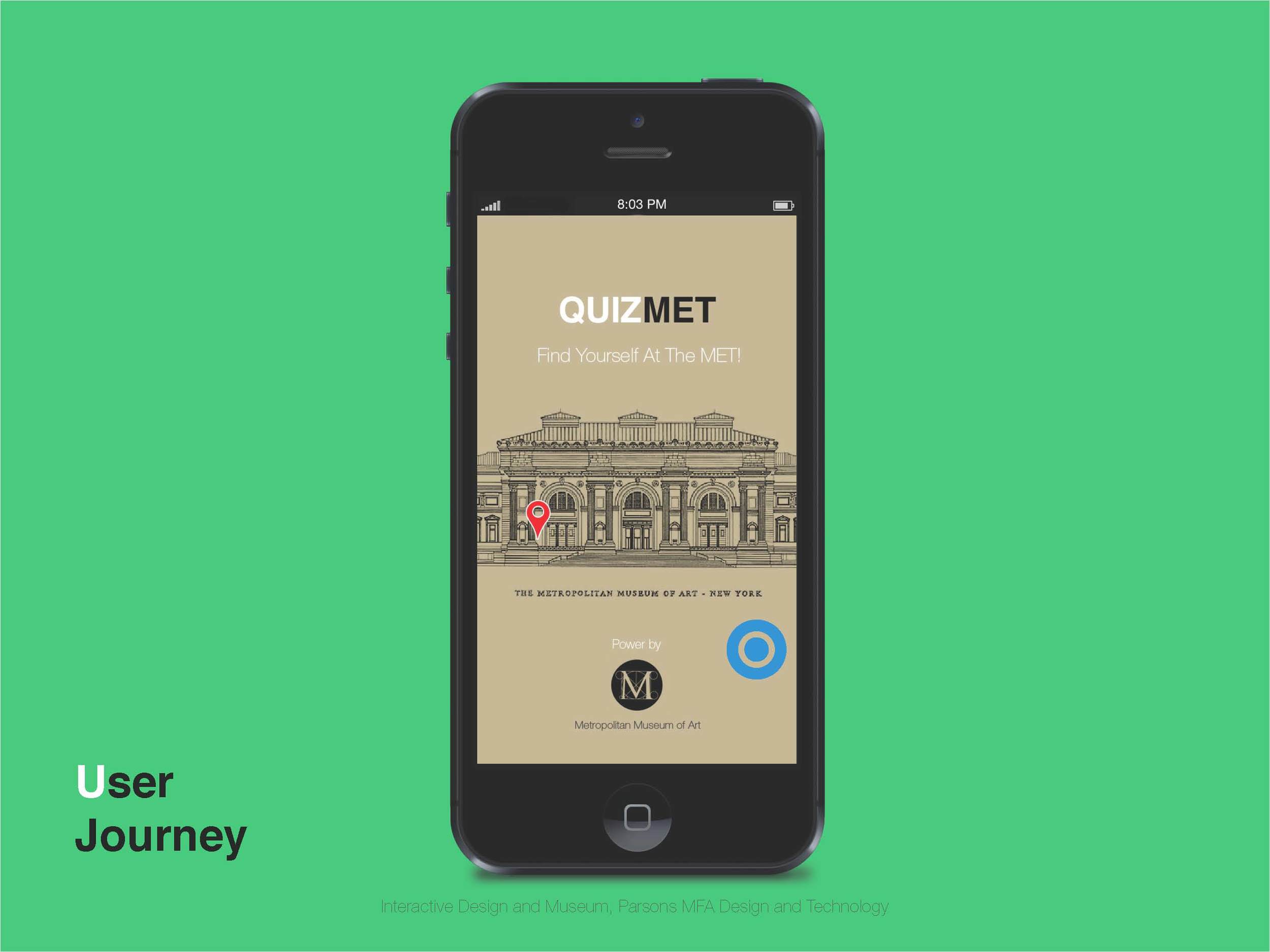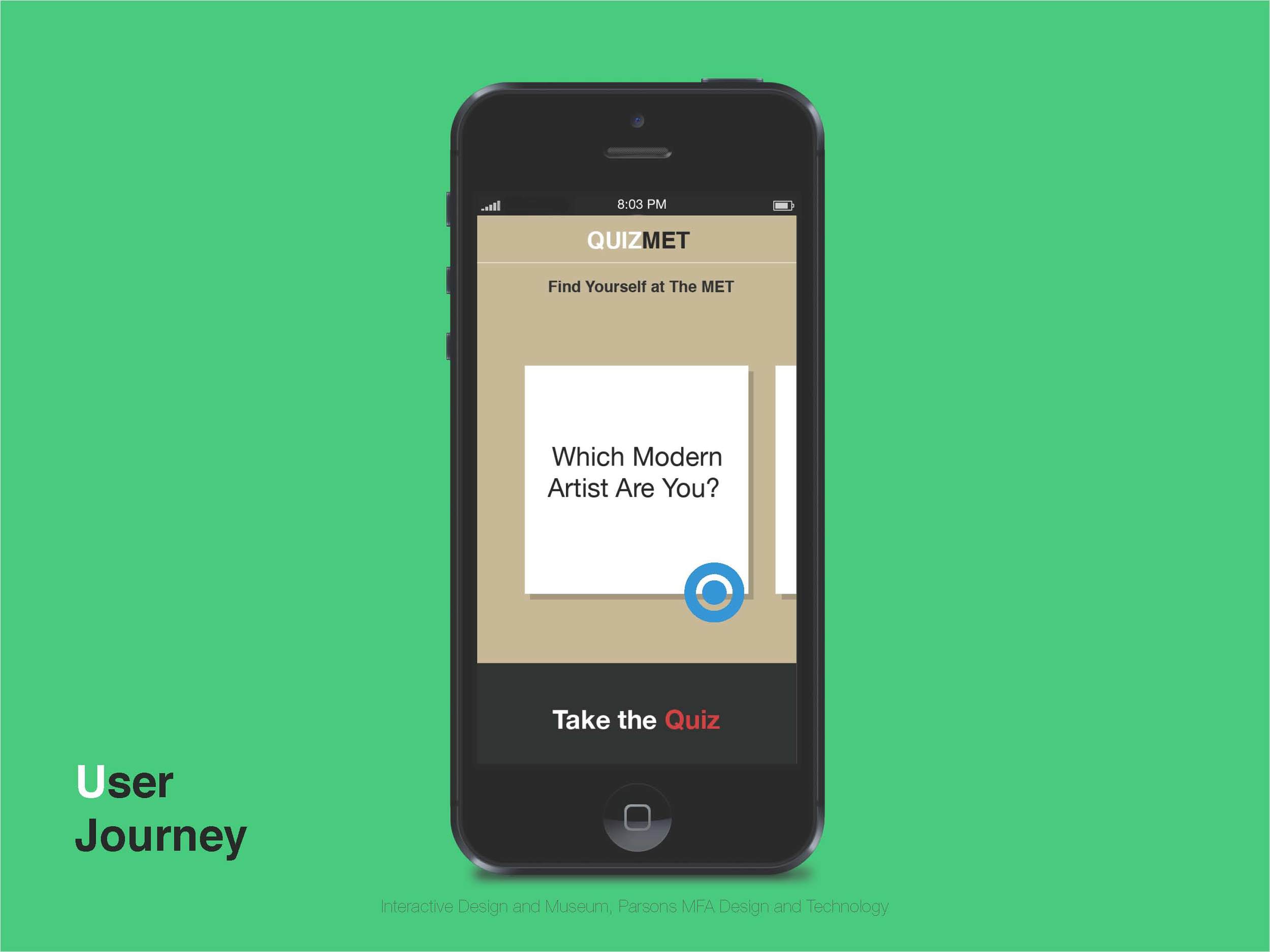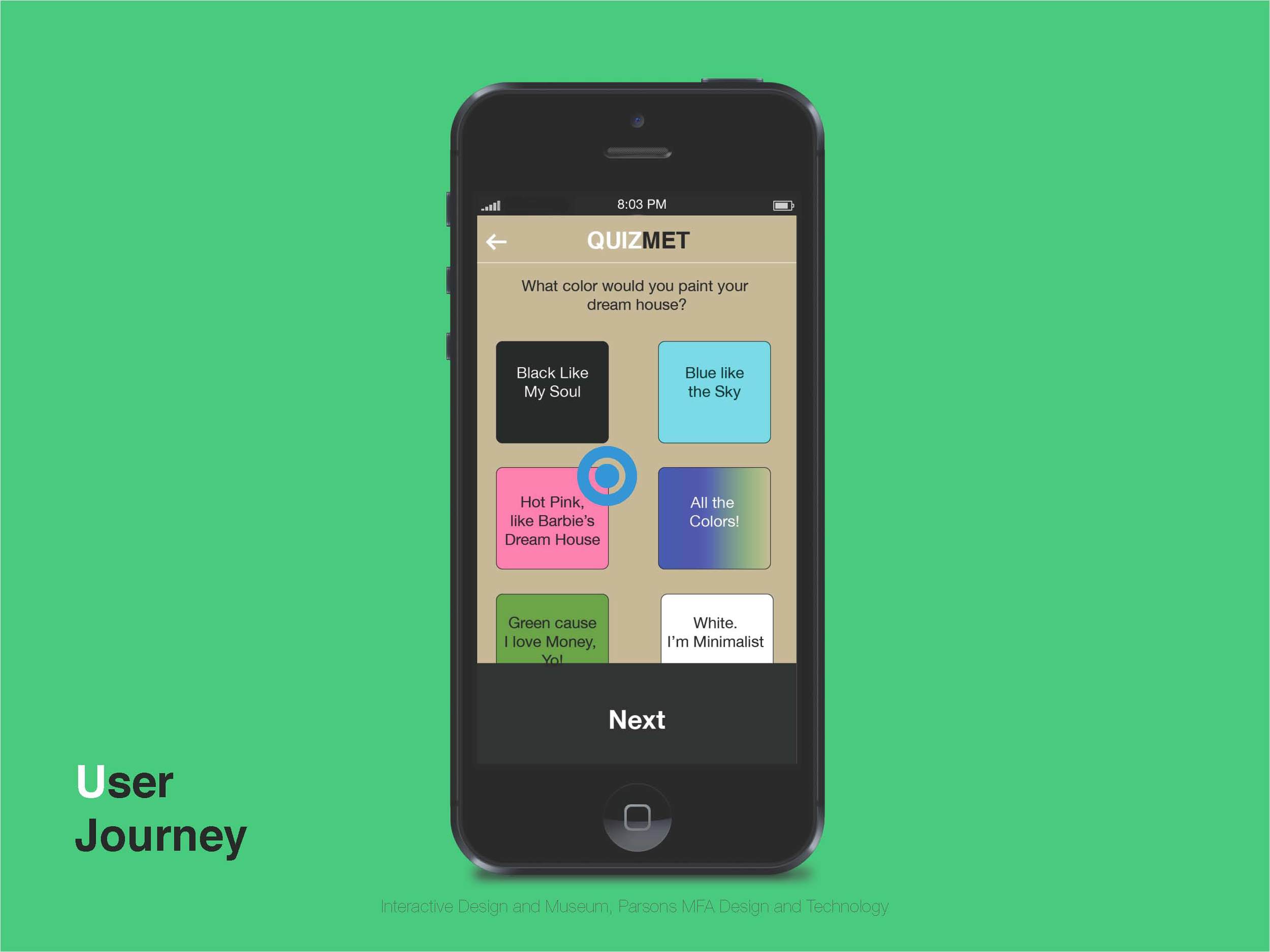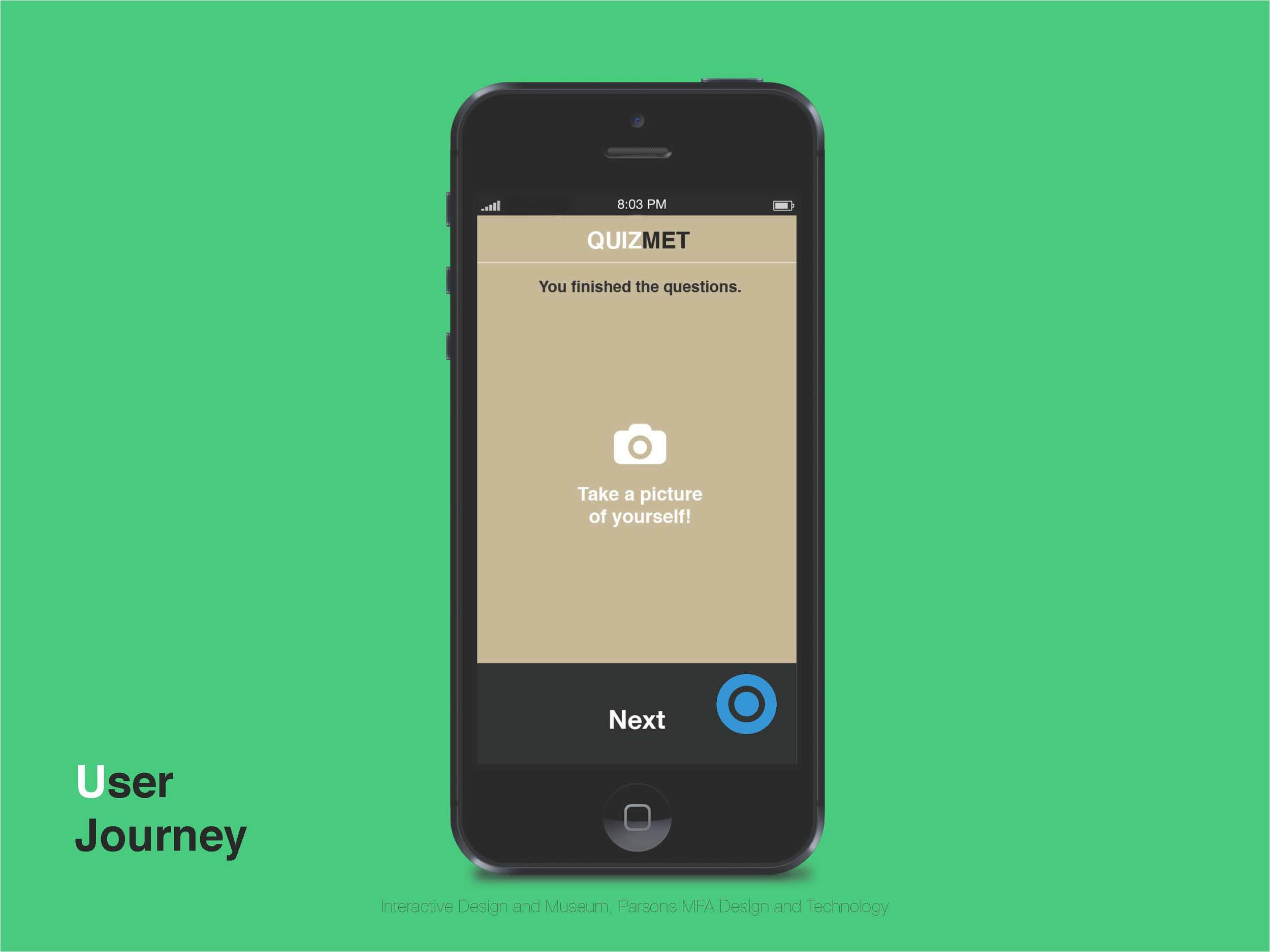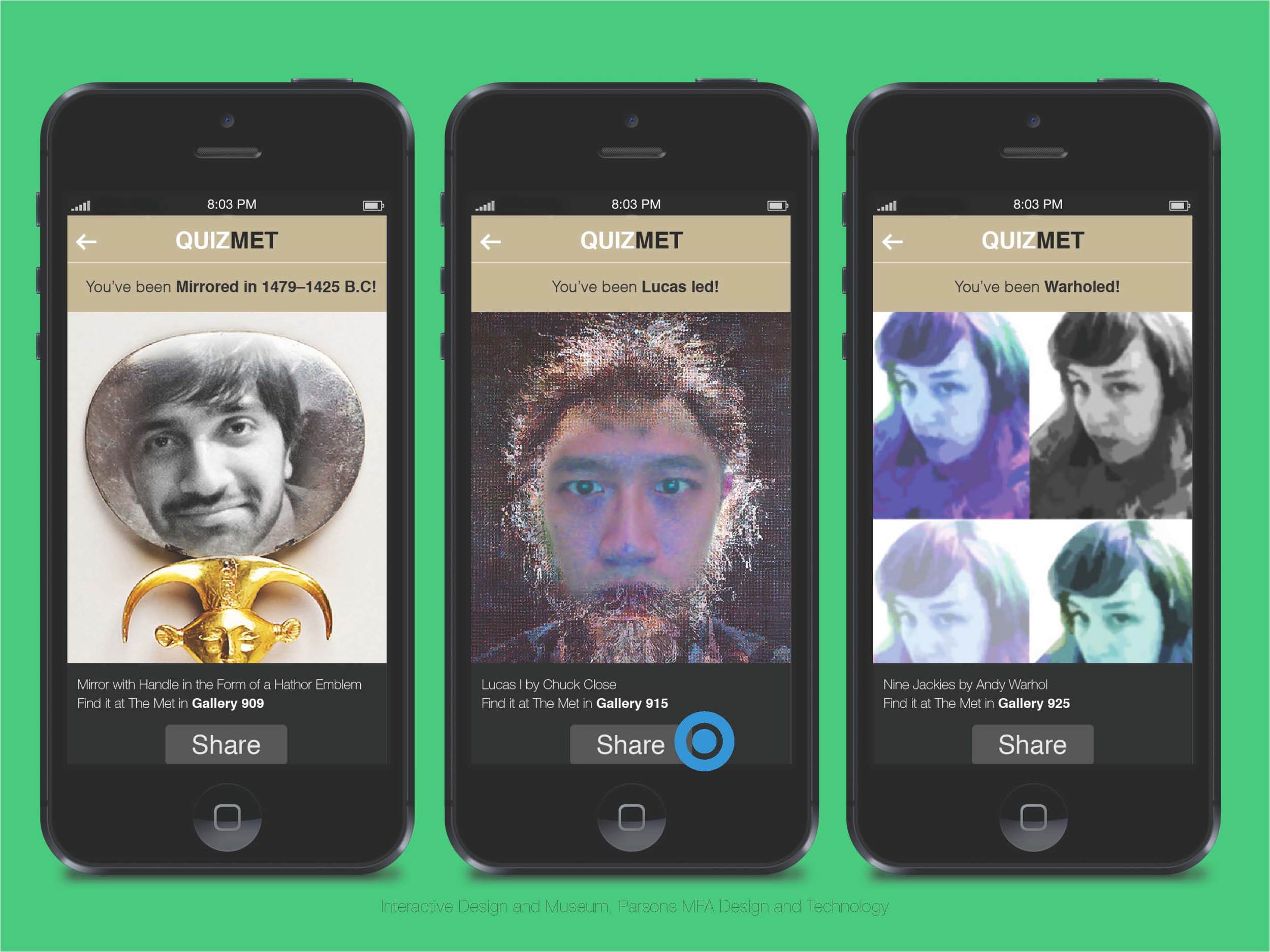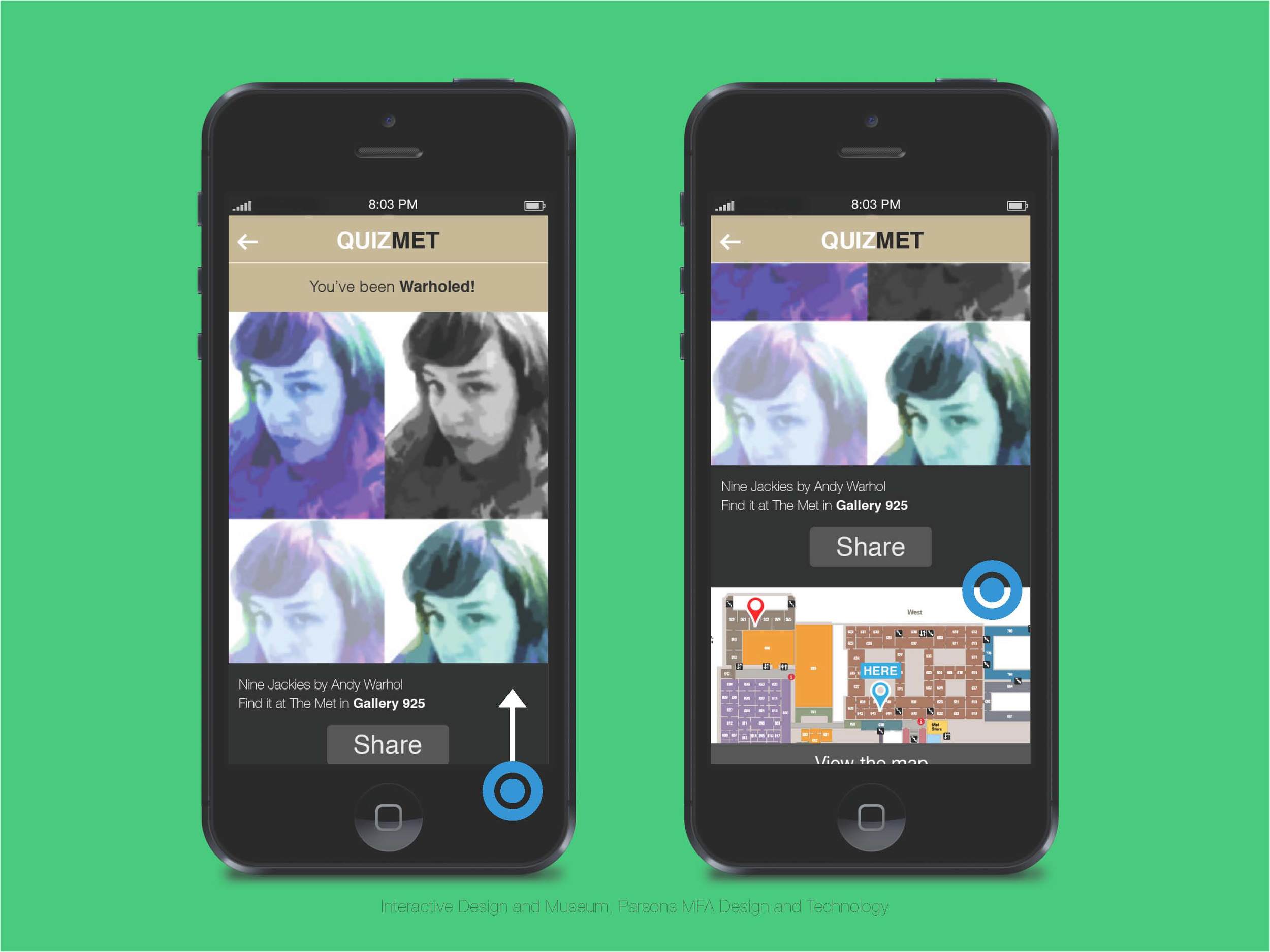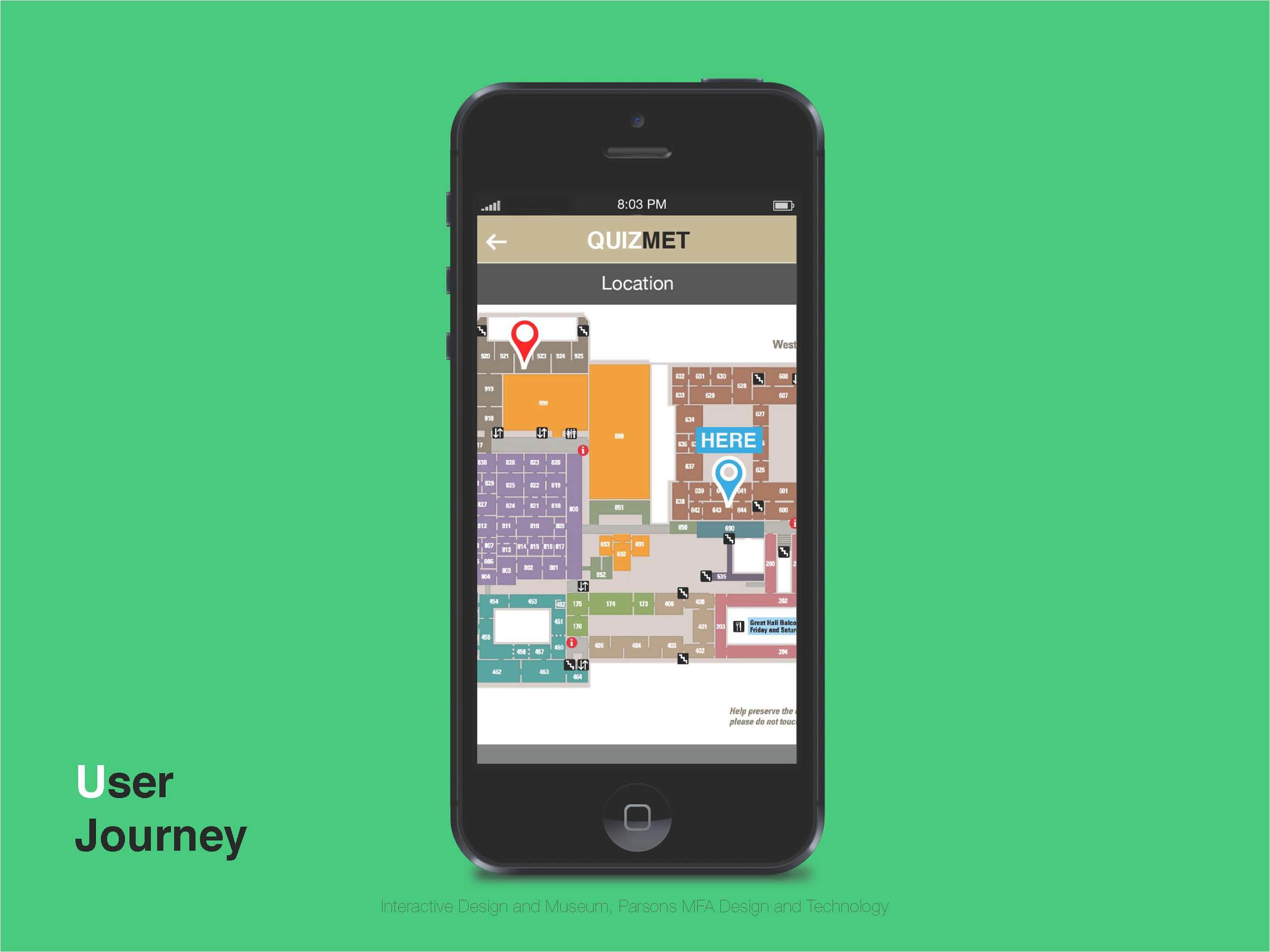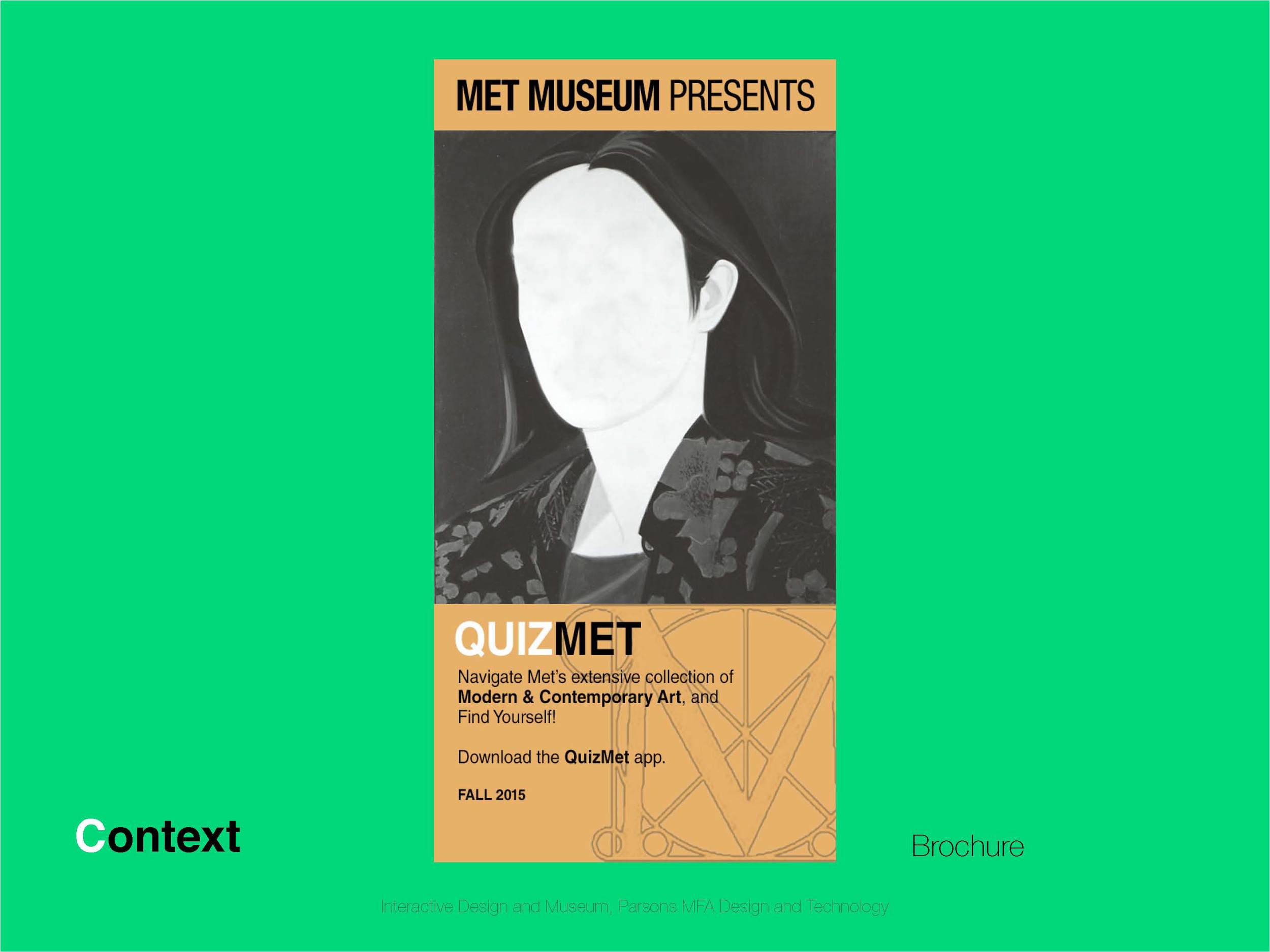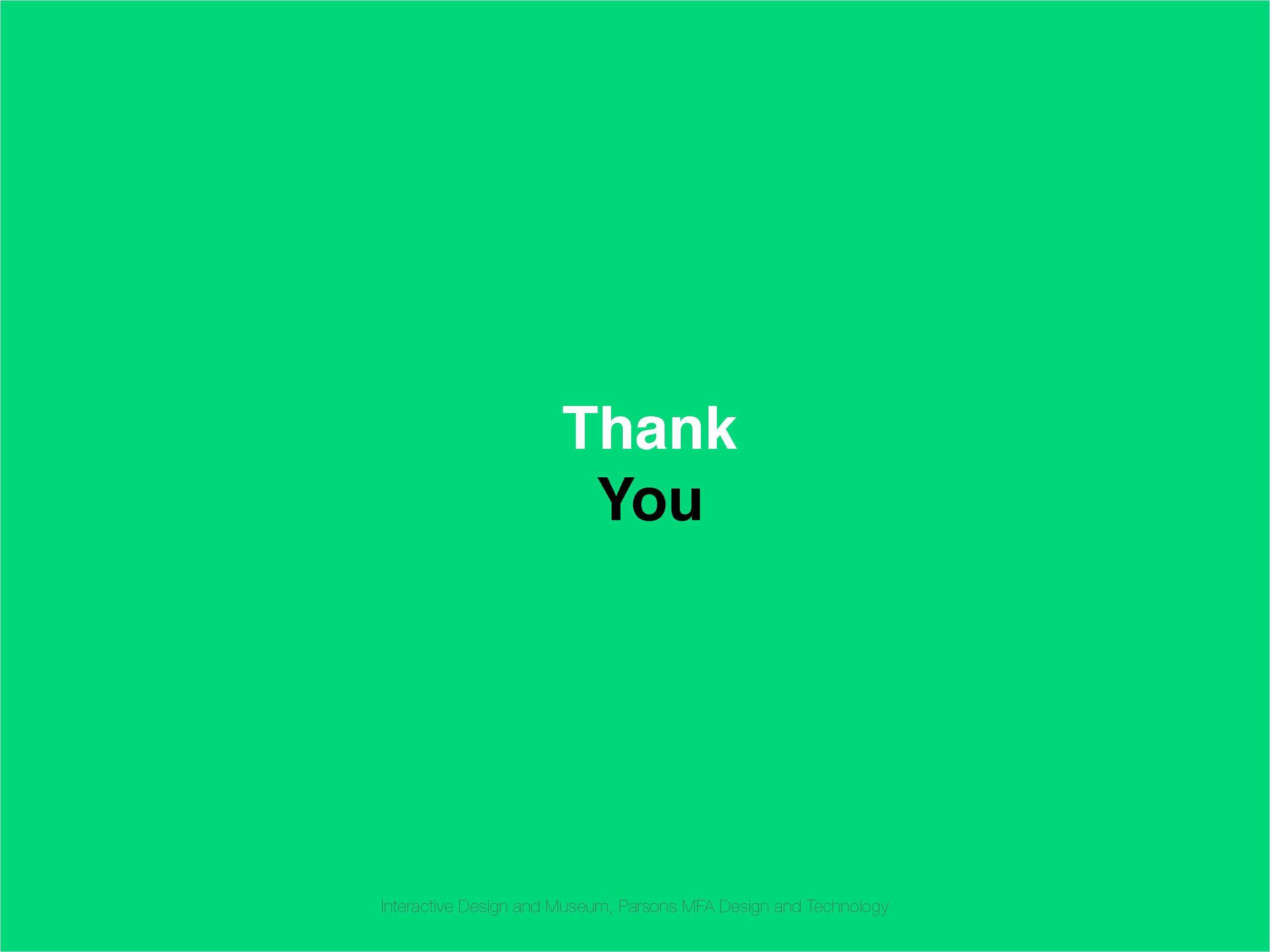QUIZMET is a mobile App prototype created by Niki Selken, Gulraiz Khan, and Li-Chung Chang in April 2014.
As an MFA student in Design and Technology at Parsons, I have focused on interaction design as it pertains to live spaces. Over the past year I have visited a number of museums and analyzed their use of technology which fosters interaction between exhibits and visitors, as well as between people. One notable example is my recent work with The Metropolitan Museum of Art. I was part of a team of three who designed a mobile app prototype. The RFP goal was to engage the millennial generation with the often overlooked Modern Art Collection of The Met. The app, QUIZMET, was critiqued and reviewed by the Mobile Producer staff of The Met. These kind of interactive design projects fuel my passion for integrating technology and interaction on a fundamental level.
What does QUIZMET do?
QUIZMET is a cross between an app and a BuzzFeed quiz. It mimics the “what XYZ are you” format of quizzes pioneered by BuzzFeed, and places them in the context of Met’s Modern and Contemporary art collection. It also leverages the popularity of ‘selfies,’ and incorporates them into the app.
QUIZMET will have a number of quizzes, e.g., What modern painting are you? What contemporary work of art are you? What modern artist are you? The quizzes will be short (5 to 6 questions), each with multiple options. After answering all questions, the user will be asked to take a selfie. The result will either be the user’s face in a work of art that is in Met’s collection, or their selfie in a contemporary style that the museum has. The result can then be shared via social media.
How does QUIZMET help the Met?
The result will not only have the title of work/style and the artist, but also its location at the Met. For starters, therefore, it gets the word out on Met’s Modern and Contemporary Art Collection. Quizzes have a potential to go viral, and that could only help the Met. It also “educates” users, who will be by and large millenials, on modern art in a non-didactic way. By extension, it makes the Met appear jovial, and an approachable institution.


